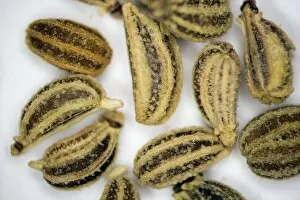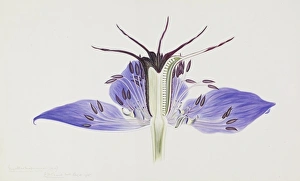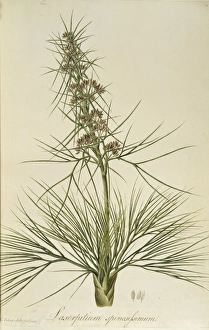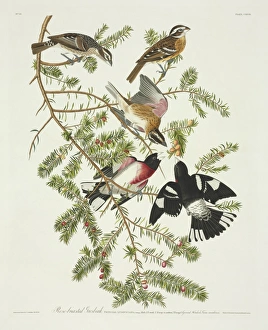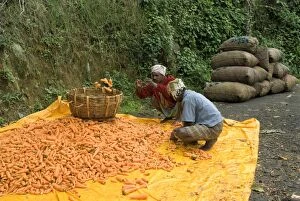Apiaceae Collection (page 4)
Apiaceae is a fascinating family of plants that includes various vegetable roots like the well-known Daucus carota, commonly known as carrot
All Professionally Made to Order for Quick Shipping
Apiaceae is a fascinating family of plants that includes various vegetable roots like the well-known Daucus carota, commonly known as carrot. These vibrant orange roots are not only delicious but also packed with nutrients. Tab IV of the Apiaceae family showcases an array of intriguing members such as coriander and Sweet Cicely (Myrrhis odorata), which can be found in Europe. In January, Powys, Wales witnesses the freshly dug roots of Parsnip (Pastinaca sativa) Javelin F1 variety. The sight of these earthy treasures is truly captivating. Meanwhile, a curious harvest mouse (Micromys minutus) finds solace on Common hogweed (Heracleum sphondylium), meticulously cleaning its nose. Spignel (Meum athamanticum) adds a burst of color to this diverse family with its striking hues captured in a beautiful lithograph. Another enchanting member is Wild Angelica (Angelica sylvestris), depicted in Leonhart Fuchs' De historia stirpium commentarii insignes from 1542. This colored engraving transports us back in time and allows us to appreciate the rich history behind these plants. The Alpine Sea Holly or Queen of the Alps (Eryngium alpinum) graces Malbun, Liechtenstein Alps with its majestic presence. Its inflorescence stands tall against the backdrop of nature's wonders. Teasel (Dipsacus fullonum), Hedge parsley (Torilis), and Allium seedhead silhouettes create intricate patterns that showcase the artistic side of this plant family. Lastly, Sea holly (Eryngium maritimum) thrives amidst sand dunes on Menorca Island in Spain's Balearic Islands—a testament to their adaptability and resilience. From humble vegetable roots to delicate flowers adorning landscapes worldwide, Apiaceae encompasses a vast array of captivating plants that continue to intrigue and inspire us.


